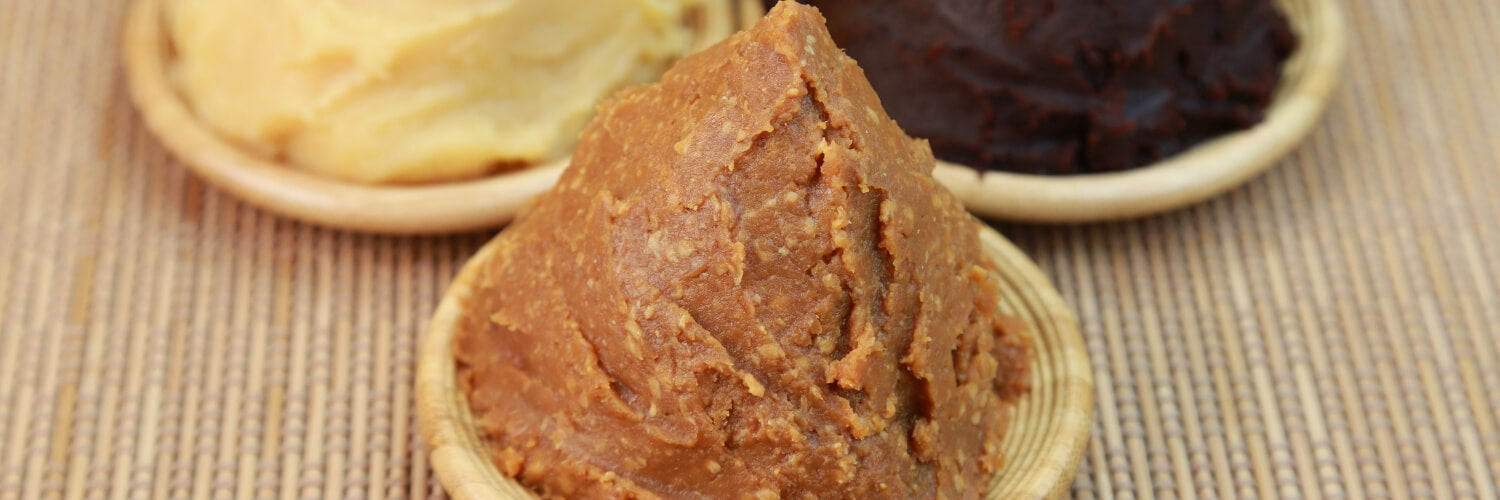
Did you know that there are actually many types of miso, each with varied culinary uses in Japanese cooking? The different ingredients used to create miso paste result in different flavors, making miso a very versatile ingredient.
Miso soup is a common menu item in nearly any Japanese restaurant in the United States. But there is much more to miso than just a component used to add more flavor to the distinctive dashi broth. And although miso soup is very good and healthy, once you realize what other culinary applications miso possesses, you’ll make it a regular staple in your fridge or pantry.
But first, you also need to be aware that there are actually a few different types of miso. Learning more about the history of miso and how best to use each kind will enable you to develop wonderful flavor profiles in both Japanese and American dishes.
What Is Miso?
The primary component of miso is fermented soybeans that have been formed into a paste. People add other ingredients to create white, red, or yellow miso. There are actually several more varieties of miso that you can purchase. However, the above three are the most common and versatile.
History of Miso
A part of the Japanese diet for centuries, miso was once a fermented food made from animal proteins, rather than a plant-based protein. It was also called jiang, and originated in China. Historical records state that Buddhist monks first brought jiang made from soybeans into Japan. Over the decades, jiang went through several changes as the different Asian cultures developed their own variations.
In Japan, where rice production was the most popular farm crop, people used rice to create jiang. In other areas where barley crops were more prominent, jiang made from barley was more popular. Eventually, jiang became known as miso in Japan. Then, people named those different types of miso after the provinces where they developed the miso.
Industrial production of soybean miso began in the 17th century. As its health benefits and nutritional properties became more widely known, the fermented soybean paste only grew in popularity, becoming a major part of Japanese cuisine.
How to Make Miso
Miso is made from a fermented mixture of soybeans and a grain, usually rice or barley. The ingredients are fermented with the aid of a culture called koji, which is first created by isolating a plant mold called Aspergillus oryzae and mixing it with steamed rice. Once the koji is created, the other ingredients are introduced to the mixture, and the breakdown and digestion of starches begin, aiding in the fermentation process. Different strains of Aspergillus oryzae can be used to create different types of miso.
While it’s easy enough to purchase miso paste in both small and large quantities in an Asian supermarket, you can also make your own miso at home! You only need a few ingredients, and if you follow the directions detailed in the link above, you’ll soon have your own batch of miso paste!
Different Types of Miso
Traditional Japanese miso can be classified into four categories: rice, barley, soybean, and blended miso. In addition to the varying ingredients, the color, saltiness, sweetness, and aging duration can all result in additional types of miso.
Awase (Blended) Miso
This is the most common type of miso paste. Awase miso is light brown in color and is the most versatile of all the miso pastes. Typically a mix of white and red miso, the two types complement each other to make a miso paste that is suitable for use in many Japanese dishes.
Soybean (Red) Miso
Soybean miso is usually packaged as red miso, but can also be referred to as aka (red) miso or Haccho miso. Its ingredients include soybeans, barley, and other grains, red miso is aged longer, resulting in a rich, salty flavor. Only a small amount of red miso is needed to add intense levels of umami to soups, stews, and marinades.
Saikyo (Rice) Miso
White miso’s main ingredients are soybeans and rice. Fermentation length is shorter than red miso, and it delivers a much lighter and slightly sweeter flavor that is perfect to complement soups, dressings, and marinades.
Barley Miso
Yellow miso that has a flavor profile somewhere in between red and white miso. It is not as common as the other miso pastes. It is, however, very popular in the Kyushu and Shikoku areas in the southern part of Japan. In addition to its use in soups and marinades, it also makes a nice seasoning for vegetable dishes.
How to Store Miso
When stored properly, miso paste can have a very long shelf life. First, pay attention to the Best By and Use By dates — with miso, these are merely guidelines. Typically, miso will last approximately nine to 18 months after opening.
Once you open the miso paste container, place plastic wrap over it before sealing the lid again. This will help to keep air exposure to a minimum, extending the shelf life of the miso. The ideal temperature for miso in the fridge is 41-46 degrees Fahrenheit. You can also store miso in the freezer. Miso won’t freeze in a regular household freezer, and you can just scoop out the amount you need and drop into boiling water to make miso soup, or allow it to soften for other culinary applications.
Note that over time, miso will tend to turn browner in color. This is normal, as is the formation of any liquid on top of the remaining paste. Simply mix the miso before use. However, if the miso begins to exhibit an odor that seems a bit off, or you detect an odd flavor, it might be time to discard the miso. This is especially true if you see the presence of mold.
